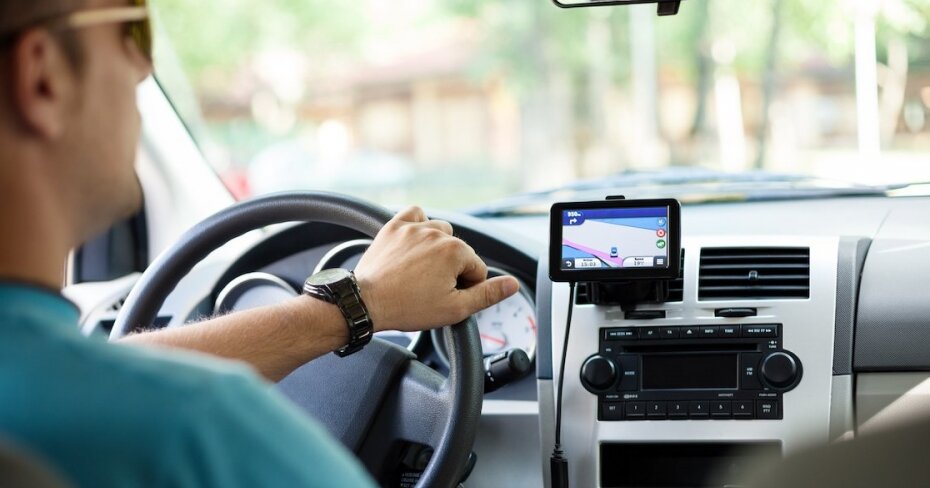How does Ontario’s new distracted driving law affect rideshare drivers?
By: Lisa Coxon on February 12, 2019
My boyfriend can spot an Uber driver anywhere. It’s actually become somewhat of a game for him. If we’re approaching a vehicle pulled off to the side with its hazards on, forcing us and all the traffic behind us to merge into one lane, he’ll tease me from the driver’s seat:
“Uber driver? ...Uber driver?”
Other times, we’ll get stuck behind a slow driver who’s clearly trying to spot someone on the sidewalk, and keeps switching between looking at the cell phone on their dashboard and out their window. Or we might be behind a vehicle that abruptly decides to make a poorly executed U-turn in the middle of the street because they’ve realized their fare is on the other side.
These are what my boyfriend considers to be the biggest clues. Once he spots the Uber decal in the back windshield, it’s game over. “UBER!!” he’ll shout. “I TOLD YOU!”
Sadly, he’s always right. (And believe me, I don’t say that often).
“Why are Uber drivers allowed to use their phone while they drive?” he asked me one day after such an encounter. “Shouldn’t that count as distracted driving?”
That got me thinking: how does Ontario’s new distracted driving law, which came into effect on January 1, affect rideshare drivers whose workspace is quite literally housed within an app that must be used inside their vehicle — not to mention their heavy reliance on GPS?
In the age of Lyft and Uber, what, exactly, constitutes “distracted driving” anymore?
The lowdown on the law
Ontario passed legislation for a new distracted driving law on Dec. 12, 2017, under an amendment to the Cannabis, Smoke-Free Ontario and Road Safety Statute Law Act. These changes, which include a substantial increase in fines, were made in order to deter a certain form of distraction: the use of handheld communication and entertainment devices, as well as certain display screens that are visible to the driver.
No matter what class of licence you hold, if you’re convicted of distracted driving, you’ll be fined $1,000, docked three demerit points, and undergo a three-day licence suspension. A second conviction will cost you $2,000, six demerit points, and a seven-day suspension. A third and any subsequent convictions will result in a $3,000 fine, six demerit points, and a 30-day suspension.
Distracted driving is a big problem in Canada. We know it’s unacceptable — illegal, even — to do, but 33% of us have admitted to texting while stopped at a red light, according to 2016 data from CAA National.
Some 23% of Canadians adjust the settings on their GPS while on the road, according to a poll from market research firm Léger that surveyed more than 1,000 drivers in Quebec last year. (The poll was commissioned by AllState Insurance.)
It is illegal, however, to engage with the GPS using anything but bluetooth or voice commands while you’re driving or even stopped at a traffic light. This is where things could get hairy for rideshare drivers
The Insurance Bureau of Canada says that drivers are 23 times more likely to be involved in an accident if they’re texting while driving, and four times more likely if they’re talking on the phone while driving, even if it’s a hands-free connection.
Ontario’s new penalties are proof that law enforcement is getting more serious about cracking down on the dangerous activity. Toronto Police launched a zero-tolerance distracted driving blitz in early January and laid 670 charges.
According to the Ministry of Transportation, it’s now illegal to:
- Use a phone or other handheld wireless communication device to text or dial (calling 911 in an emergency is the only exception);
- Use a handheld electronic entertainment device, such as a tablet or portable gaming console;
- View display screens unrelated to driving, such as watching a video;
- Program a GPS device, except by voice commands
That last point especially presents a bit of a challenge for rideshare drivers, who depend heavily on GPS to do their job.
The thing about GPS...
“The law applies to all drivers operating motor vehicles on public roads in the province,” Bob Nichols, communications branch employee at the Ministry of Transportation, told LowestRates.ca in an email. “Including Uber drivers.”
While it’s not illegal to rely on GPS to get around, the Ministry of Transportation says it has to be on a securely mounted device, like a cell phone mounted on the dashboard or the windshield of the car. It is illegal, however, to engage with the GPS using anything but bluetooth or voice commands while you’re driving or even stopped at a traffic light. This is where things could get hairy for rideshare drivers.
The MTO says drivers must input the required information into their GPS before they start driving. So, programming a new route or accepting a new fare while driving or while stopped at a red light, for instance — something that’s pretty commonplace among ride-share drivers continuously accepting new fares — would still count as distracted driving.
Better training could reduce distraction
Taxi drivers are guilty of being distracted, too. And with companies like Beck having created an app for riders and drivers, more room has been made for cell phone distraction in cabs. That said, in the world of taxis, the driving came first and the app came second. And, because the ridesharing industry is relatively new, it’s safe to assume that taxi drivers generally have more experience in ferrying people around than rideshare drivers do. Many taxi drivers know their respective cities like the back of their hand. Before GPS or apps came along, drivers had to memorize the streets in order to do their job.
There’s also a significant difference in training, too. Beck Taxi, for example, has made it mandatory for taxi drivers to take a 25-hour Taxi Driving Training program through Centennial College before they can drive for the brokerage. (The program was created in 2016, after Uber had successfully lobbied for the City’s own training course to be eliminated). The course teaches taxi drivers “the layout of the Greater Toronto area,” along with other important skills, such as defensive driving.
Lyft and Uber drivers, on the other hand, don’t face the same mapping tests. Lyft drivers only need to be 21, pass a free online background check, and use an iPhone or Android smartphone. Uber drivers also only need to be 21, have at least one year of driving history, fewer than nine demerit points, and no major convictions to be hired.
Sure, the onus of observing the new distracted driving law is ultimately the driver’s responsibility. But are ridesharing services like Lyft and Uber doing enough to prepare and equip their drivers with the tools they need to make that possible?
Right out of the gate, this allows for rideshare drivers to be far less experienced and familiar with the roads they’re driving on than taxi drivers. This no doubt results in a heavy dependence on GPS, which results in a greater likelihood for distracted driving.
Even on anecdotal level, anyone who’s taken both an Uber or Lyft and a taxi knows that when you jump into a taxi, you rarely see a GPS. More often than not, you can just provide the general intersection of where you need to go, and the driver can get you there based on their own knowledge. Sure, you might not be able to say, “Take me to 123 Taxi Street” and get an exact result, but you can say “I need to go to the corner of Rideshare and Taxi street” and they’ll probably know how to get you there, no problem. You can fine tune the remainder of the navigation yourself — “My house is on the right, just past the traffic light” — when you near your destination.
When you hop into an Uber or Lyft, on the other hand, you’ve preprogrammed an exact address. It’s not unusual for your driver to rely entirely on GPS for the duration of your trip to get you to it.
Helping drivers abide by the new law
“When a driver-partner is approved on the Uber app, we provide resources and materials to them about the Uber app, help familiarize them on ways they can be safe while on the road, as well as popular pick-up and drop-off areas and locations for riders within their city,” Uber said in a statement.
It’s important for rideshare drivers to familiarize themselves with their respective apps. But for a driver unfamiliar with their city’s geography, is having to rely on an app not directly setting them up to be distracted?
Sure, the onus of observing the new distracted driving law is ultimately the driver’s responsibility. But are ridesharing services like Lyft and Uber doing enough to prepare and equip their drivers with the tools they need to make that possible? Uber confirmed to LowestRates.ca in an email that the company alerted its riders and drivers of the new law when it came into effect. But should they and other ridesharing companies be providing drivers with the hands-free technology that the new law calls for?
On Lyft’s website, the company promotes using a phone mount to encourage hands-free driving. Lyft will give drivers a free one, but only after they complete 30 rides.
Turns out, Uber is currently testing technology for a hands-free pickup feature for its U.S. drivers, which allows drivers to interact with both the app (e.g., accept trips) and customers using just their voice. That would check the MTO box that says programming must be done with bluetooth or voice commands. There’s no estimate yet on when this hands-free feature will be tested in Canada.
Until it is, I hope my boyfriend and I don’t get stuck behind another Uber driver. Because you know I won’t hear the end of it.

.jpg?itok=88nBkwga)
.jpg?itok=W5fSKczJ)